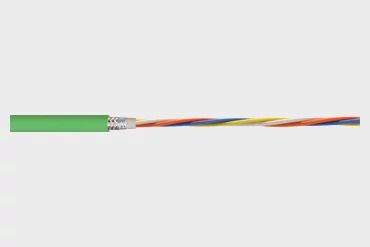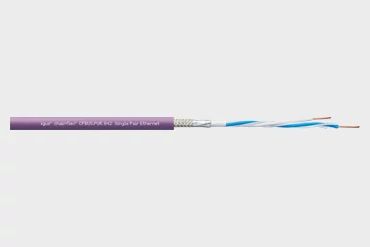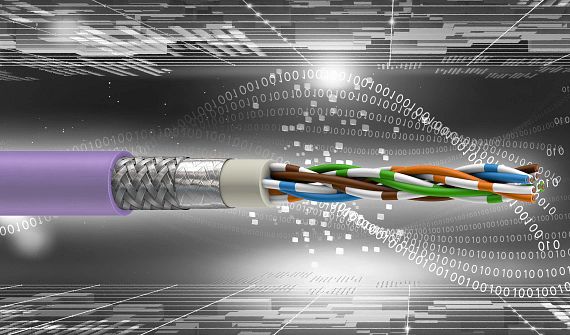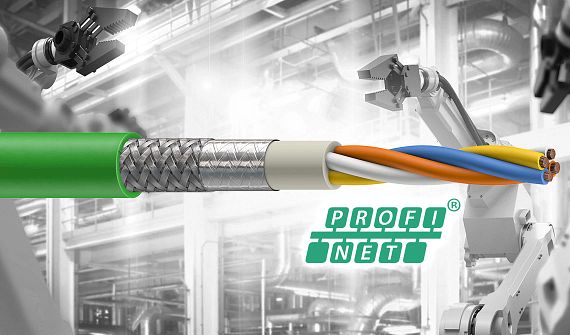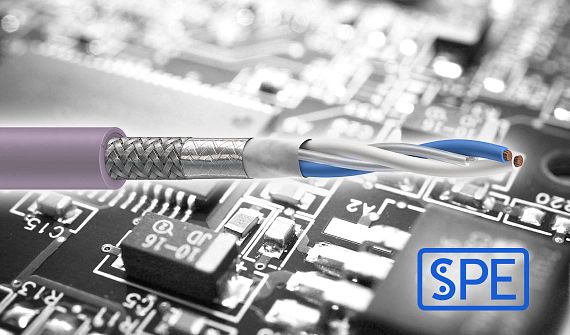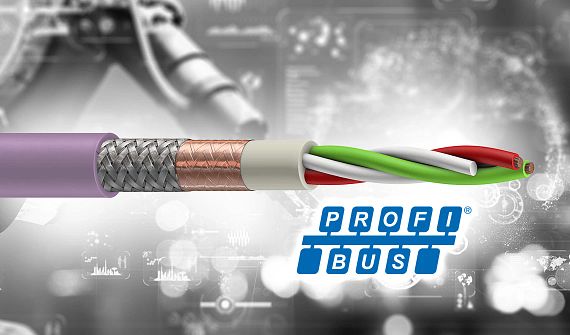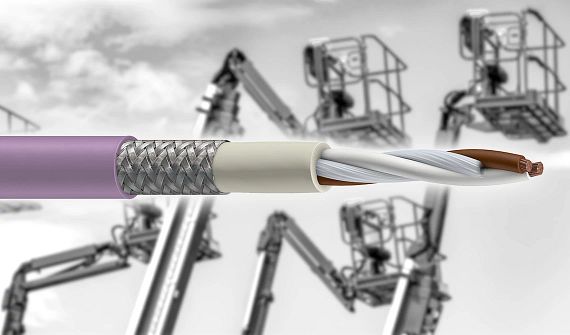Bus cable solutions for high data transfer
What is a bus cable?
The bus cable stands for a data connection that connects all participants with each other via a transmission path. Bus cables are designed for high transmission rates of up to 10 Gb and therefore differ from simple data cables because they are adapted to the respective bus system according to specification in order to comply with the specified attenuation values, capacities and characteristic wave impedances.
- All commonly used bus systems with mechanical features
- Six different outer jacket materials
- Simple selection matrix for a good overview
- Reliable data transmission
Contact an expert
Bus cable overview
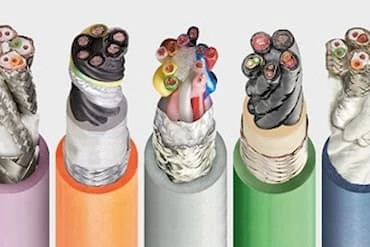.jpg?crop=no&color=ffffff00&w=370&quality=80)
Types of bus cables
Ethernet bus cables
Many bus systems are based on Ethernet. Well-known brands include Profinet, CC-Link IE, EtherCat and Sercos. They are all based on a structure that has been used for many years in mainframes and PCs. Ethernet is described in categories that cover frequencies and data volume capacities from 100 Mbps to 10 Gbps. The terms CAT5, CAT5e, CAT6A and CAT7 are frequently used. These cables contain two or four pairs in a shield pair or overall shield design, depending on requirements. We have prepared an overview matrix that considers the mechanical parameters in addition to the electrical parameters just mentioned.
Find out more
Profinet bus cables
Profinet is one of the most popular bus cables for use in industry. The real-time capability option and modular concept makes it eminently well-suited to a large majority of applications. igus has nine different mechanical qualities of Profinet cable, from PVC cables to PUR cables to cables for extraordinary applications such as those involving torsional movement or requiring great strength. Profinet fits into the Industrial Ethernet standard, alongside bus systems such as Sercos, EtherCat and CC-Link IE. igus is a member of the Profinet user organisation and conforms to all required market standards.
Find out more
SPE bus cables
Single Pair Ethernet (SPE), the newest addition to the group of bus systems. The new bus technology was introduced in 2019 and has since progressively conquered the market. This innovation offers new capabilities for the fast-growing IIoT market. What is special here is the cable's new design: a single pair, but still with the capability of transmitting a CAT5e signal. We are working steadily with the SPE organisation on refining and standardising this technology. This technology has notable capabilities, particularly in applications involving tight installation space.
Find out more
Profibus cables
Today, Profibus is one of the most important industrial bus cables. It was developed in the 1990s and quickly became the standard for reliability and high data quantities. The Profinet Nutzer Organisation (PNO), Germany's Regional PI Association, is concerned with technical refinement and coordination of various member companies such as igus. The cable, with its red and green foam cores, is very distinctive. igus provides chainflex Profinet cables in PVC, PUR and TPE designs for any moving e-chain application.
Find out more
CAN bus cables
The CAN bus is extremely tough and remarkable for its robust network protocol. Its origins are in the automotive industry, and it is commonly found in industrial systems today. The special thing about these CAN bus cables is that they are available with different cross-sections as required and are used for different applications with one or two pairs. As with other bus systems, chainflex offers cables for linear chains and for torsion.
Find out more
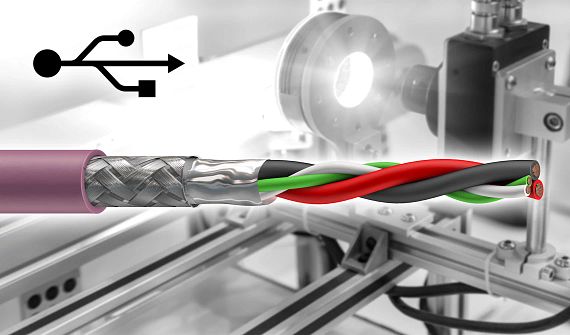
Other bus cables
Bus cables are used in a variety of applications, and bus systems for computers or consumer electronics are also commonly used in industrial applications. One example is USB 2.0 and USB 3.0, which have distinctive connectors and can often be found in industrial cameras. The same is true for DVI, a typical monitor interface. There are also chainflex solutions for these bus cables. Some applications require prominent bus systems such as INTERBUS or DeviceNet, which are part of the CFBUS bus cable family. There is also the prominent ASi bus cable, which is easily identifiable in any system because of its yellow colour and square corners.
Here you have the opportunity to experience the CFBUS bus cable as a virtual, three-dimensional model

Experience the CFBUS.045 for yourself

Our blog post on the topic
Bus cables for long travels and the alternatives
In long travels, our products have to permanently withstand a heavy load. Because as soon as we talk about long travels, the question of the maximum transmission length often arises, e.g. in the case of a bus cable.
In our various blog posts, we shed light on these various topics and show the possibilities associated with it.
Visit the blog posts
More about bus cables
As automation has expanded over the past few years, data transmission requirements have risen steadily. Distances across which data is moved from sensor to evaluation unit are simple 1:1 connections. Data cables used to handle this. Now they are being replaced, bit by bit, with bus systems, which allow faster, more complex communication within the system. It requires the associated bus cables, which are good at transmitting digital signals with their steep flanks. These cables are, so to speak, special data cables that are built specifically for the requirements of the bus system in question. In the simplest case, this might be colour and core/cross section or certain capacitive or inductive properties that allow the necessary characteristic wave impedance. Today, these cables are the basis for familiar bus systems such as Profibus, Profinet and CAN bus, but also USB and CC-Link. We will show you the features that allow continuously functioning data transmission here.Are you familiar with our online tools?
Simply find and choose a suitable type, calculate its service life and order it onlineChainflex® product finder
Find the right cable for your application quickly and easilyTo the product finder
Service life calculator tool
Calculate the service life of any chainflex® cableTo the service life calculator
chainflex® wiki
Find everything you need for chainflex® cablesFind out more
Special cables configurator
Configure your individual cable in just three minutesTo the configurator
Bus cables in applications
Perfect data transfer in camera technology thanks to chainflex bus cables
IDS Imaging Development Systems GmbH is a manufacturer of digital industrial cameras with USB interface for industrial image processing. For a long time, the company was looking for robust industrial-grade USB cables for clean signal transmission. igus was immediately convincing. Due to the robustness and good signal quality of our cables, they were able to withstand mechanical and electrical loads in the long term.
Cable for USB interface
Special bus cables for suspended applications in the lift
The highest level of security is required in a savings bank - in the case of an access control system in a lift system, the use is only granted by a card reader control. The bus cables used by us hang freely in the lift shaft and are connected to the card reader in the lift. Our special bus cables have a four-pair core structure like a normal Ethernet cable and have a TPE inner jacket and an extremely bend-resistant braided shield.
Chip card readers
Are you looking for an chain for your cable?
Find your e-chain®
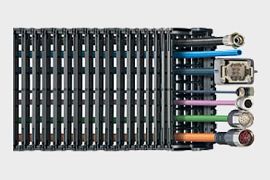
.....or do you require a fully harnessed version?
To the readychain
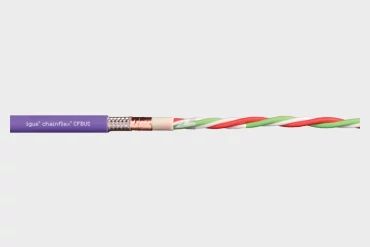
.jpg?crop=no&color=ffffff00&w=370&quality=80)
.jpg?crop=no&color=ffffff00&w=370&quality=80)
